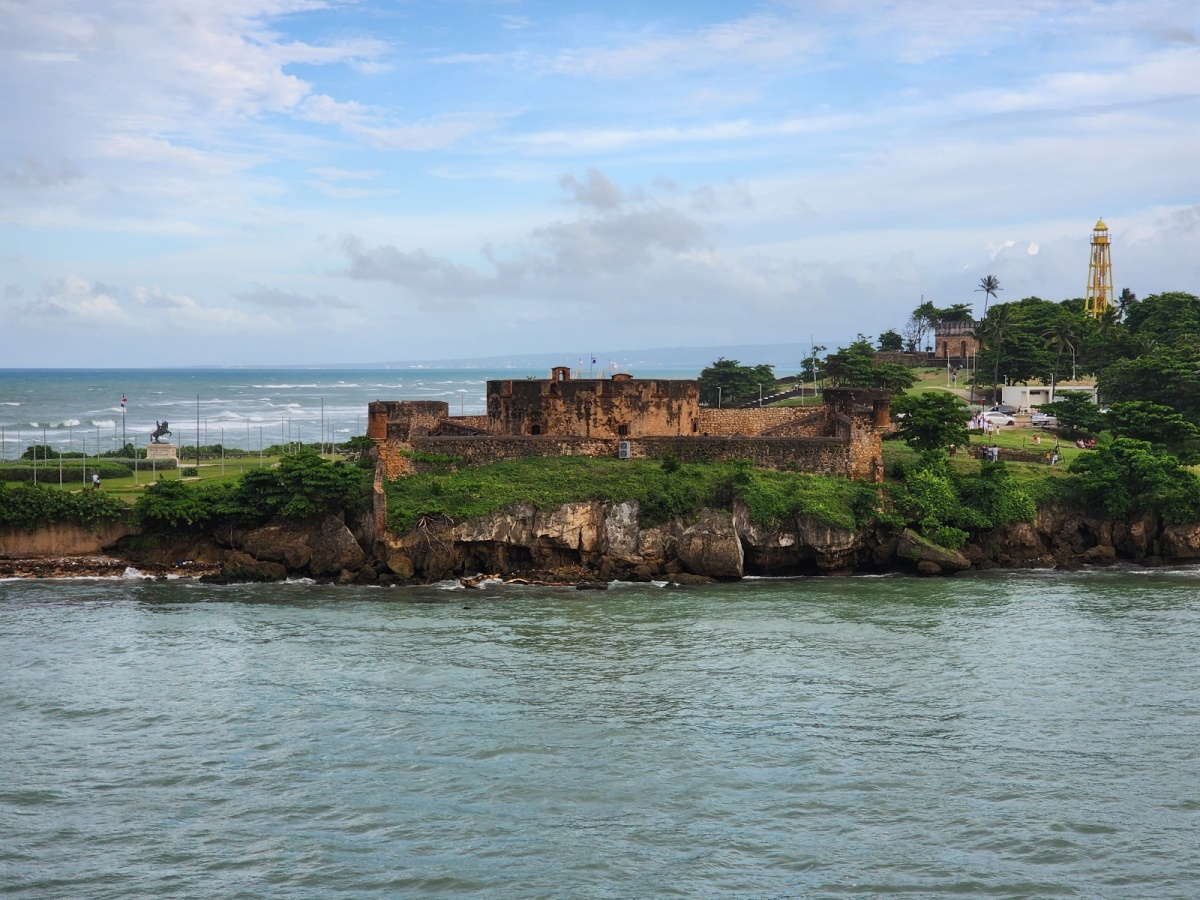A favorite Caribbean port of mine is Puerto Plata, Dominican Republic. It’s known for its beautiful beaches, natural wonders, and rich history. Of course, I loved its history the best, but also greatly enjoyed Puerto Plata’s culture where I met lovely people, imbibed in the local drink—Mama Juana, and roamed around taking in all the street art and sites of the city.
We docked at the Taíno Bay cruise port. This port is located in the heart of Puerto Plata, so you’re within walking distance of the city’s historic district. The port has several shops, restaurants, pools, a lazy river, animal adventures, and other things to explore, but to get a real sense of the Dominican Republic head out of the port into the city itself. There is also another port nearby, Amber Cove, which is located in Maimon Bay, but I was very happy to be so close to the Puerto Plata. Once we got through the port, the city was right at our feet and it took us only ten minutes to get to places like Umbrella Street.
Puerto Plata History
Before Europeans colonized the island, the area that is now Puerto Plata was inhabited by the Taíno people, an indigenous group that lived throughout the Caribbean. The Taínos were peaceful agriculturalists and fishermen, so Puerto Plata with its water resources and fertile soil was likely home to many settlements.
In 1492, Christopher Columbus arrived on the northern coast of the Dominican Republic during his first voyage to the Americas. He named the area Puerto Plata, meaning “Silver Port.” While there was no actual silver, the name stuck. See my YouTube video below for an interesting mural describing the history of Spanish conquistadores and their effect on the people and the land.
In 1502, the Spanish governor of Hispaniola (the island shared by the Dominican Republic and Haiti), Nicholas de Ovando, conquered the area by force. Indigenous people were subjected to the encomienda system, which was a Spanish labor system that rewarded conquerors with the labor of the people they conquered. Puerto Plata’s location on the north coast made it a key port for the Spanish, particularly for exporting gold and other important resources back to Spain.
During the Spanish colonial period, Puerto Plata was as an important military and commercial port, providing a gateway for trade between Spain and its colonies. You can visit the fort to this day.
After the Haitian Revolution, Hispaniola became Haiti, including the…
Click Here to Read the Full Original Article at Roaming Historian…
